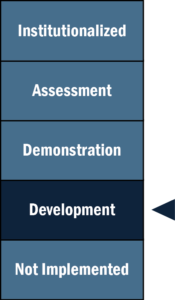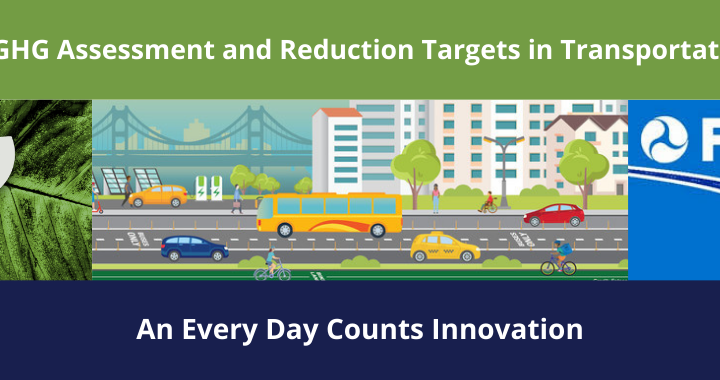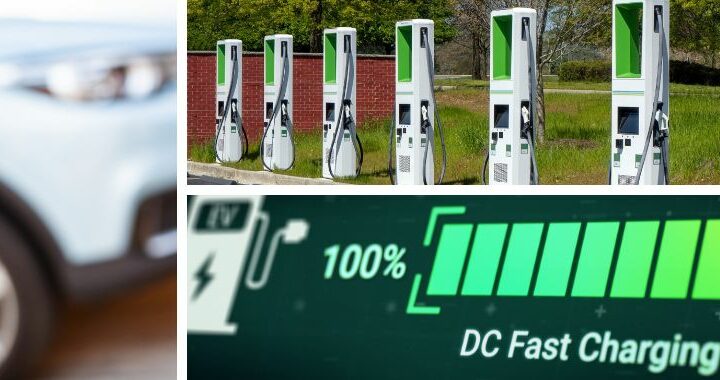What is Integrating GHG Assessment and Reduction Targets in Transportation Planning?
By incorporating greenhouse gas (GHG) analysis into transportation planning and decision-making, agencies can act now to help decrease future emissions in order to reduce their climate impact and meet national reduction goals. Transportation is the largest emitter of greenhouse gases (GHGs) in the United States-as well as one of the fastest-growing sources. The transportation sector generates approximately 29 percent of the Nation’s GHG emissions, and roadway vehicles account for about 83 percent of that amount.
Tools and Practices for Effective Decision-Making
State departments of transportation (DOTs) and metropolitan planning organizations (MPOs) play essential roles in implementing policies, programs, and projects that can reduce GHG emissions, not only directly from motor vehicles, but also life-cycle emissions from construction and embodied carbon of materials. Integrating the consideration of GHG emissions into agency procedures and decision-making can lead to better transportation program and project decisions.
DOTs and MPOs can address GHGs in the planning process based on vetted, state-of-the-practice approaches that include specific analytic tools, methods, and frameworks to support target setting and GHG estimation that can be integrated with existing planning products, including statewide and metropolitan transportation plans and transportation improvement programs. They can also support planning for programs such as the newly established National Electric Vehicle Infrastructure Program and Carbon Reduction Program.
BENEFITS
Adaptable Strategies. Currently available tools and best practices related to GHG analysis and target setting will allow all agencies, regardless of technical capacity or size, to take steps toward integrating the consideration of GHG emissions into existing planning structures.
Practical Mitigation. Comprehensive methods of addressing GHG emissions, from both tailpipe and life-cycle emissions, can be integrated into current planning products and programs to provide decision-makers with reliable information that can be used to mitigate GHG emissions throughout a project’s life cycle.
Measurable Progress. By considering GHG emissions at every step in the transportation planning and decision-making process, agencies can align GHG reduction goals with strategies to meet targets and make progress.
Learn more about this EDC-7 Innovation.
Integrating GHG Assessment and Reduction Targets in New Jersey Transportation Planning
 Stage of Innovation:
Stage of Innovation:
DEVELOPMENT
(November 2024)
NJDOT is integrating GHG emissions assessments into key planning documents. In collaboration with agencies such as MPOs, NJ Transit, and the Port Authority of NY & NJ, the DOT is effectively implementing the Carbon Reduction Strategies plan. GHG tools, including an emissions inventory and forecasting model, are being tested and refined for broader application.
Through continued collaboration with regional partners and the use of advanced emissions modeling, NJDOT is strengthening its capacity to measure and mitigate the environmental impact of its transportation projects.
What's Next?
NJDOT is making steady progress in calculating GHG emissions reductions, both before and after project implementation. While current tools are effective, the department is proactively seeking FHWA guidance to refine and enhance the accuracy of GHG impact measurement for individual projects.
The agency plans share its experiences in integrating GHG criteria into project planning and funding, providing valuable insights to help other states improve their emissions forecasting and develop more precise measurement tools for carbon reduction strategies.
Lastly, NJDOT seeks support to refine GHG forecasting models, standardize data collection, and establish data-sharing agreements. The state is also exploring funding to expand GHG tools and the Carbon Reduction Strategies plan statewide.
INTEGRATING GHG ASSESSMENT & REDUCTION TARGETS IN TRANSPORTATION PLANNING: NEW AND NOTEWORTHY




